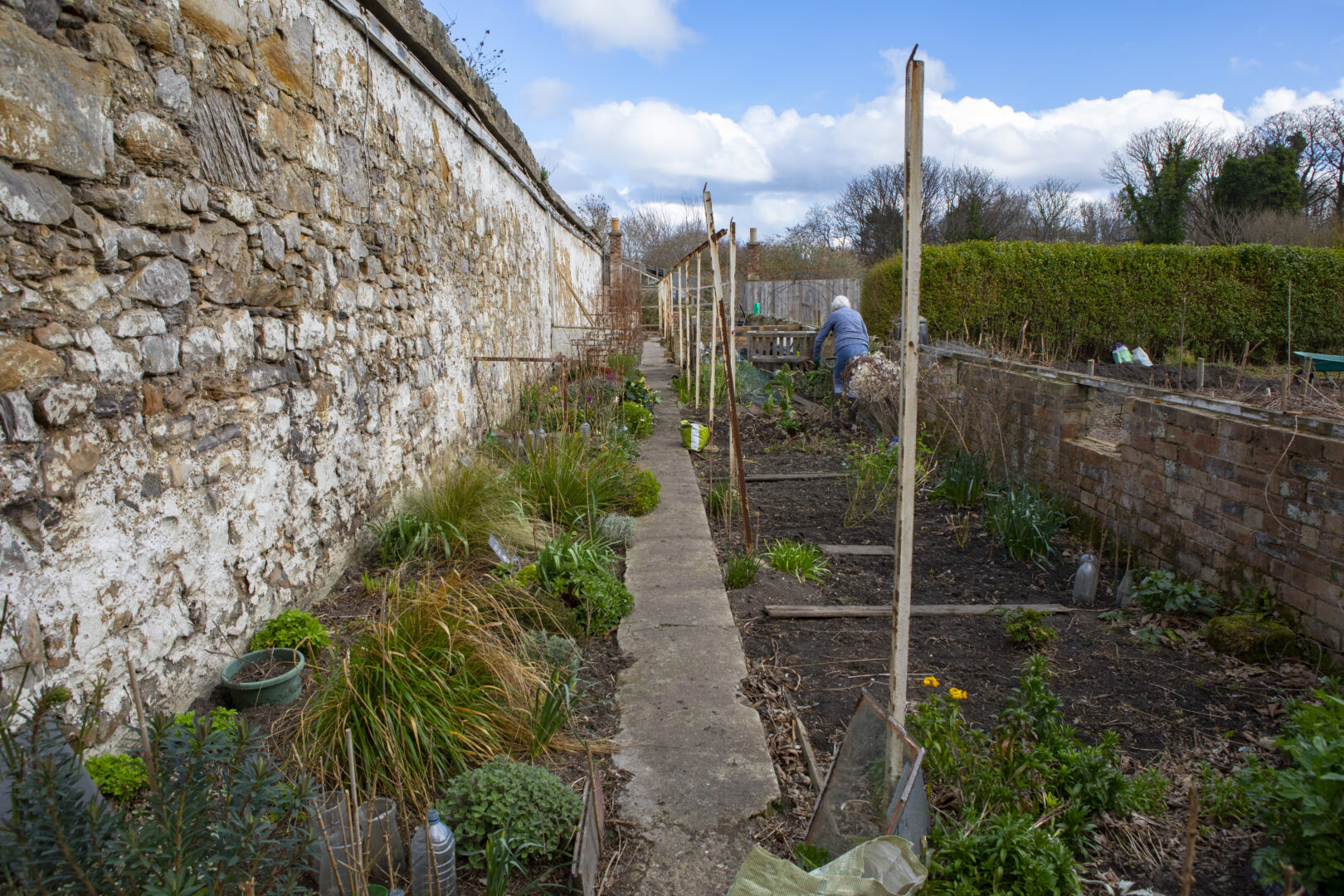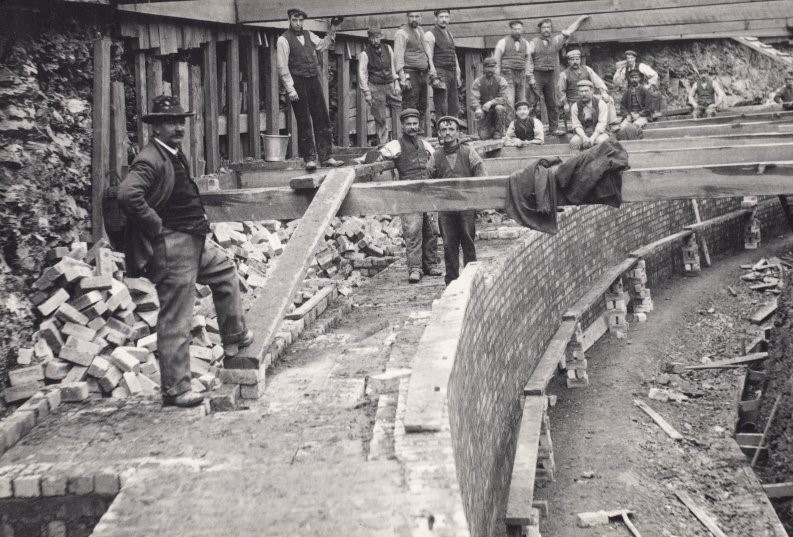Granton is a former industrial neighbourhood and first appeared on maps dating back to the 17th century. Since then, the area has been home to a host of industries, mainly due to its favourable positioning on the waters of the Firth of Forth.
Granton Castle and Granton Castle Walled Garden
Granton Castle dates back to the 15th century and was one of the first recorded structures in Granton, which at that time had historically comprised mainly of agricultural land with little human settlement. The Castle stood on a rocky coastal outcrop overlooking the Forth and eventually fell into disrepair in the 18th century. The building later collapsed when the surrounding land was quarried in the early 20th century. The castle’s Walled Garden is now the only part of the historical structure to survive.

Cultivated by the SCIO Friends of Granton Castle Walled Garden, it is now a beautiful community garden, offering the perfect space for the cultivation of locally grown fruit, flowers and vegetables, while maintaining important wildlife areas and space for small scale events, general exercise and a volunteer programme.
Granton Gasworks
In 1897, land at Granton was acquired from the Duke of Buccleuch and the Granton Gasworks was built, first producing gas in 1902. By the 1960s the Granton Gasworks was the largest single gas-producing unit in Scotland. As the nature of gas production began to change many of the original buildings were adapted or demolished. By the 1990s all gas production had ceased. Only a small number of buildings and structures now remain from the original gasworks.

View of workers during the construction of Granton Gas Works, 1 November 1899 (Canmore SC1165392)
Granton Station, which provided transport for the workforce when the gasworks was in full operation, was recently restored as part of the regeneration project. In 2023 it was recognised by the National Transport Trust as a site of significant transport heritage and a Red Wheel plaque was installed at the site. The restored building is currently being used as a creative industries and enterprise hub.
In addition to the railway station, the gasworks’ legacy can still be spotted on Granton’s skyline through the iconic Granton Gasholder, the last out of three original gasholders to remain. Listed as an example of Victorian industrial architecture, the structure is now being lovingly restored and the frame will contain a new public park for all to enjoy in 2025.
Quarrying in Granton
Quarrying was a very important industry in Granton. The earliest recorded use of stone from Granton Quarry was used for Holyrood Palace in the 16th century, though the stone from the quarry was principally used to construct Granton’s historic harbour. The quarry also supplied stone for the statue of Lord Nelson on Nelson’s Column in Trafalgar Square, London. The quarry, 80 feet deep and eight acres in area, was flooded during a storm in 1856 and became home to the Scottish Marine Biological Station until it moved to the west coast in 1885.
Granton Harbour
In 1834, Granton was chosen as the favourable location to build a new harbour, to accommodate the increasing arrival of ships in Edinburgh. Plans for its construction received Royal Assent in 1837 and the central pier was opened on the same day as Queen Victoria’s coronation in 1838, resulting in it being aptly named the ‘Victoria Jetty’.
Granton Harbour quickly became a hub for trade and transport alike. It was a key port for the export of coal and import of raw materials needed to make paper. It’s prime location on the Forth meant that the harbour also served as the landing of the world’s first ‘ferry train’, which transported locomotives across the estuary from 1850. This service was eventually made redundant in 1890 upon the opening of the Forth Bridge, however, the harbour continued to serve as a transport base for the Northern Lighthouse Board, with their boats taking lighthouse keepers and their supplies to and from lighthouses along the coasts of Scotland.
Other Industry
Besides being a hub for trade, transport, quarrying and gas production, Granton has hosted other industries that shaped it into the community it is today. In 1898 the Madelvic Motor Carriage Company Works were built for the manufacture of electric cars. Though now derelict, the factory building has been recognised by the National Transport Trust as a site of significant transport heritage and a Red Wheel plaque is installed at the site.
Granton was also home to Bruce Peebles (later Parsons Peebles), a company that manufactured high voltage electrical equipment, including transformers for electricity power stations. Sadly, the works burnt down in a huge fire in 1999, resulting in production being moved to Leith Docks.
